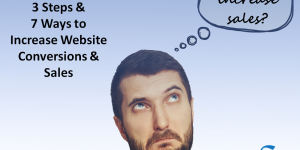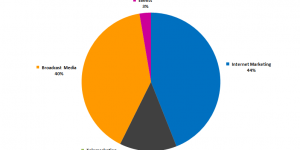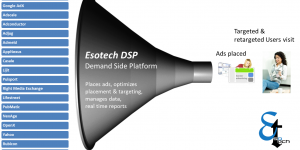
7 Simple Steps for Effective Digital Marketing in 2015
A broad scope approach to your campaign is important. With time, balance, and persistence, your site will pay for itself!
Read more
A broad scope approach to your campaign is important. With time, balance, and persistence, your site will pay for itself!
Read more
Plenty of visitors but no conversions? Let us show you how to optimize your site with proper calls to action and easy access to contact forms. Get your customer in, get their questions answered, and make that conversion happen!
Read more
Retargeting lets you bring your customers back after they visit. Run ads on other sites so that when they browse your content, products, and services they’ll be reminded elsewhere and come full circle to complete a conversion.
Read more
It’s not about how hard you push your marketing, but that you properly balance it. Too much focus on one strategy can affect the entire campaign.
Read more
Never get caught unprepared. Make sure you know what expenditures are here, which are coming, and which might be unexpected with our handy calculator.
Read more
Retargeting will always cost you less than a click campaign. Why does this matter? Once you lose a click, it’s gone. Retargeting will get them back: a necessary balance in your digital marketing campaign.
Read more
Search engines these days matter. If a human can read your site, so can a bot: create content for readers and engage with your community for a loyal customer base that will only aid your marketing efforts.
Read more
Posting relevant content on social media only strengthens your bond with your audience; plug your brand or solution into the content and what you have is useful advertising!
Read more
You have to be out of your mind to create great marketing strategies and content that connects with your customers. That’s right, you have to be completely our of “your” mind, here’s why. I have worked with countless clients that want to base their marketing strategy and tactics based on their personal point of view. They want to develop their marketing strategy based on what they like, products they use, brands they like, with the assumption that their customers are have similar interests and behave like them and they are “plugged in” to their customers. Subtle assumptions based on your own personal preferences are often very misleading. For example, a few years ago I had lots of discussions with clients about using social media and Facebook for marketing campaigns targeting Boomers (people over 45). Many, in fact the majority, were unconvinced that social media was of any interest to anyone other than teenagers. This opinion was based on their own use, or lack of use, of social media. It is now commonly accepted that social media is highly effective across a wide range of demographics, including Boomers. Today the debate is often about mobile use, how important mobile is for marketing today, and whether people use mobile devices for viewing websites and the effect and reach mobile has on consumers. Again, while all of our clients have smart phones, most only use a small fraction of the features available and few use the internet via their phone or at best only very limited. Thus their view and opinion of mobile use is based on their own use and not representative of the overall market, especially people under 40. One last example of getting out of “your mind”. I am not a fan of the iPad, in fact I coined an acronym for them, I am Prisoner of Apple Design. I find them slow, locked down like a federal prison, and they just don’t have the power to do any real work. We have one at Esotech that we use for testing website compatibility and it works great with Pandora, and yes, I do use it when traveling, but that’s it. My point is that my view of the iPad is clearly in the minority as their are tens of millions of loyal iPad fans that are madly in love with them. If we based our website design and marketing strategies on my opinion of the iPad we would be missing a huge market that has now emerged into a wide range of other tablets. I recognize that my opinion of the iPad is based solely on my personal preferences and is not representative of the general market. The same applies for much more simple assumptions about your customer’s behavior, likes-dislikes, even who your customers are. Many organizations make these assumptions about their customers and then base their marketing strategy on these assumptions, resulting in an ineffective marketing strategy. The first step to creating a great marketing strategy is to get out of your mind and into your customer’s. 5 Steps for Out of Your Mind Marketing Get out of “your mind”, accept that you are not representative of your customer demographic, and open your mind. Start the process with no opinions and no assumptions, read this guide to get help. Define your target demographic. Be as specific as possible and if necessary define multiple groups. Do some research on these groups. It’s pretty easy to do a few Google searches and get some great data and excellent blogs/articles. Do some surveys. Yes, ask your customers what they think, the results may surprise you, and even if they don’t at least you know for sure! Develop your marketing strategy. Creative Brief Define the persona of your customer, be specific. Define the writing style and tone for your website, blogs, and social media posts. Define the look of your marketing materials. Consider what will touch and resonate with your customers. Marketing Plan Establish your goals and objectives. What is the most effective media to reach your customers? Choose your media and how you will reach your customers. Create outline of how you will use each media. Define your budget. Implementation plan – develop a specific plan to with a timeline.
Read more
What determines how many fans see your posts and which posts they see? It may seem random or arbitrary, but there is actually a very specific algorithm called EdgeRank that determines where every post shows up. Much like the Google algorithm determines keyword rank for specific searches, EdgeRank determines where every post is displayed. For those that want to know how EdgeRank works we explain the details at the end of this blog post, and for those that just want to know how to get your Page posts ranking higher we explain that below. Optimize Your Facebook Posts to Increase Your EdgeRank Like the infamous Panda and Penguin updates by Google, EdgeRank is intended to improve the user experience by delivering more relevant content and reducing spam. As with Panda and Penguin, there are steps you can take to optimize your Facebook Page and posts; likewise poor practices can make your EdgeRank plummet. SEO is used to improve search rankings of websites, SMO is the social media equivalent to improve the performance social networks. Manual Posts: Facebook can detect which posts are automated and which have been posted manually. Automated posts are devalued because many of these posts are automated news feeds and some are outright spam. Many websites use plugins or apps to automatically post blogs to Facebook and while this is convenient and saves time; we no longer recommend doing this due to the inherent reduction in rank. We know recommend that Facebook posts be done manually with a comment tailored to the post (more on this later). Content: posts with comments generally have a get higher EdgeRank than posts with just a link to an article, picture or blog. These posts tend to get more Likes from Fans which also increases your rank. It is equally important that the content immediately grabs the interest of your Fans (see tips for content below). Post Frequency: while this is not part of the rank equation it indirectly affects your rank as a result of Fan interaction and comments. If you post very infrequently Fans have little reason to follow your Page and no opportunity to interact with you which will reduce your overall ranking. If you post too frequently Fans will either un-Like your page or simply ignore your posts. It is important post regularly and at a frequency that will engage your Fans, but not annoy them. For most B2B and b2C clients we recommend no more than once a day, and for some 2 to 3 times a week may be optimum depending on your content. For entertainment and news related pages we recommend once a day with the option to post more frequently when major events are happening. Interacting with Fans: this is perhaps the most important action you can take. Interaction with Fans drives more comments and shares which in turn increases your rank thereby increasing your Reach further. Facebook is very personal, even for brands and the converstation with your Fans is very important to a successful Page. Tips for Content that will Increase EdgeRank and Engagement Content is the key to engagement, which results in Likes, Shares, comments, and more visits to your Facebook Page. All of these will increase your EdgeRank, which in turn results in your posts showing up on more Fan’s feeds, thus propelling your engagement even higher. A Great Picture: in monitoring data from our client Facebook Pages and Facebook ads we found that just changing a picture and double, even more than triple click throughs. We have found that images that are fun, cute, and immediately engaging are the most successful. A Captivating Title: again from studying client Facebook data we found that the first few words can also significantly increase click throughs. Users glance at the picture and first few words and decide if they are going to Like or Share a post. Topic and Content: with a great image and title you have their attention, there’s one final ingredient, great content. In general Facebook users are looking for posts that are light, fun, and interesting. Write your content in a light and personal style. Do not overtly sell or talk about your products as this falls flat. We have tracked both light and fun posts vs posts written in a highly “professional” style and found without fail that the light-fun posts do exceptionally well, while the corporate posts always fall flat. Make it fun, light and interesting, boring and Advertorials don’t work on Facebook. Why is it called EdgeRank? “Frictionless sharing” is part of the Facebook Open Graph social sharing platform. Frictionless sharing is a concept where social interactions on a variety of networks including Foursquare, Pandora, Spotify, and games are shared in the timeline (hence frictionless). This is obviously too much information to feed onto a users timeline and it could over saturate users with a bunch of posts they really don’t care about. Every object shared, posted, Liked, or Commented on, including objects in other social networks has what Facebook calls an Edge. The EdgeRank of each interaction determines where it will show up in timelines. Three Factors Determine EdgeRank Simply put EdgeRank is the product of Affinity, Ue, Weight, We, and Decay, De (these three terms multiplied together). Facebook published the formula, what is not known is exactly how each of these factors are calculated. Affinity: this is a measure of the relationship between a particular fan and your page. Fans that have visited your frequently and posted comments will have a high affinity score while fans that liked your page months ago and have not returned will have a very low affinity score. Weight: perhaps a better description for this is value or relevance. The goal of this factor is to measure how important the post is. While you have little control over Affinity and Decay, you have a great deal of control over Weight. While no one has specifics on how Weight is calculated we do have an idea of how it works based on empirical evidence. We know that manual posts are given more weight than auto posts, shares more than likes, and comments more than likes. A post with text and a picture has more weight that just a picture. In general the more interaction and effort involved the higher the weight assigned is. Decay: this is perhaps the easiest factor to understand, a fresh post or share is more relevant and of interest to users than one from say a month ago or a year ago. As time passes the importance of a post decays and has less value. More on EdgeRank – Some Great Resources Facebook EdgeRank: What marketers need to know; econsultantcy.com – great blog with lots of details for those that want to know more. Facebook EdgeRank: The Truth About Page Feed Reach and Promoted Posts ; searchenginejournal.com – another excellent blog explaining how it works with suggestions to improve performance. Facebook EdgeRank Changes; Make Sure Your Content Comes Out on Top; socialmediatoay.com – suggestions on how to improve posts and using promoted posts.
Read more